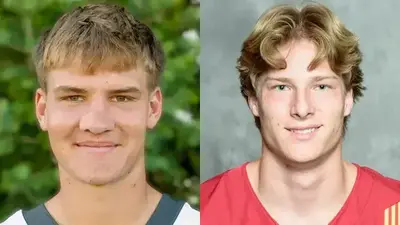"I think it’s useful to think about communication as a type of hospitality. What might I need to provide my audience for them to best understand the ideas I wish to communicate?” says Assistant Physics and Engineering Professor Dr. Jason Ho, who is teaching Introductory Physics II for the third time since he began working at Dordt in 2020.
There’s a tendency in science to get lost in jargon and mathematics, he says.
“In physics, we’re constantly ‘translating’ our real experiences into the language of mathematics, and it’s easy for ideas to get lost in translation. This is something that we think about all the time as teachers. I’m constantly trying to find examples or metaphors for communicating ideas that students find relevant or accessible, while making sure I’m not misrepresenting ideas by oversimplifying them.”
Physics II draws students from multiple majors, including engineering, chemistry, and health and human performance. It is comprised of a lecture and a lab section.
“Science communication is one of the themes we’re exploring in lab this year,” says Ho. “There’s two parts to each lab: the experiment, which includes notes that you take as you’re working and collecting data, and then the presentation of those results, which is intended for an external audience.”
As part of lab, students will write a scientific paper based on one of their experiments and put it through a peer-review process. Peer-reviewed papers are the most common way results are communicated to the scientific community.
“Each week we have focused on one piece of these lab reports at a time, so we aren’t overwhelmed by writing a single lab report without practicing each portion,” explains Carter Raiche, a sophomore engineering major. “I usually find joy in teaching and explaining big concepts, but these lab reports have been very challenging. I think by the time we get our scores back on each portion and are provided feedback, I will see more success. I will know what I am doing correctly and incorrectly and be able to apply that knowledge to my next report.”
Sydnee Tuuk, a sophomore biomedical engineering student, has found it gratifying to observe her understanding of the world grow each lab period. “At this point, I feel fairly confident in my ability to communicate physics-related findings to a non-expert, but by the end of the semester, I expect to be able to write a full lab report in confidence.”
In science, clear communication is important within the scientific community because we want to put ideas to the test, says Ho.
“If an idea or an equation isn’t supported by experimental data, then it should be revised. Equations in physics often come with assumptions, which we need to pay attention to if we want to test them against experimental data. At the same time, measurements in physics are never exact, and there’s always an uncertainty to consider. We need to pay attention to how significant these uncertainties are, and how we can most honestly represent our results,” he says. “Outside of the scientific community, I think there’s an obligation we have to others in the public sphere to represent our ideas and disciplines with integrity while keeping what we have to say accessible to others.”
Ho hopes he can help his own students hone their communication skills and communicate scientific ideas clearly to a wide range of audiences.
“Even if they don’t end up in scientific careers, I know that an ability to hospitably break down complex ideas for a wide range of audiences is a skill that will serve them well in a lot of technical vocations.”
Original source can be found here.

 Alerts Sign-up
Alerts Sign-up